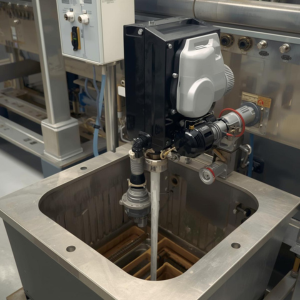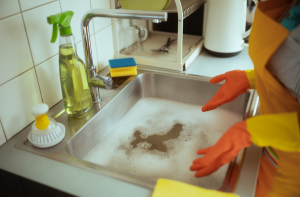Is a dosing machine better than manual dosing for grease traps?
Choosing between manual and automatic dosing for grease traps can significantly affect your kitchen’s efficiency and maintenance costs. In this blog, we compare both methods, explaining their pros and cons, and why an automatic dosing system may be the smarter choice for many New Zealand commercial kitchens. Discover how each option works, and which one is best suited to your business needs.
What is enzyme dosing and why is it important?
Enzyme dosing involves applying a biological cleaner to a grease trap to break down fats, oils, and grease (FOG). This prevents blockages, bad smells, and costly pump-outs. Whether done manually or via an automatic machine, consistent dosing is essential for maintaining a clean and compliant commercial kitchen.
To better understand the science behind this method, check out our article: How do enzyme cleaners work in grease traps?. It explains how natural bacteria and enzymes interact with FOG to keep your plumbing clear and your operations running smoothly.
How does manual dosing work?
Manual dosing involves staff physically pouring enzyme cleaner into sinks or directly into grease traps at set times (usually daily or several times a week). This method offers:
Advantages:
-
Lower upfront cost
-
Simple to start using
-
Flexible for low-volume kitchens
Disadvantages:
-
Relies on staff compliance
-
Easy to forget or under-dose
-
Inconsistent results and higher long-term risk
How does an automatic dosing machine work?
A dosing machine automatically dispenses a measured amount of enzyme cleaner at pre-set intervals (e.g., overnight when the kitchen is closed). These systems are usually installed under the sink or near the grease trap.
Advantages:
-
24/7 consistent dosing
-
Removes human error
-
Improves hygiene and compliance
-
Saves time for busy kitchen staff
Disadvantages:
-
Higher initial cost
-
Requires setup and maintenance
Which is better for your kitchen?
For smaller food businesses with light grease output, manual dosing may be sufficient if done regularly. However, for larger kitchens—or where hygiene standards are critical—automatic dosing machines are more effective and reliable.
In fact, many councils in New Zealand recommend or require consistent enzyme dosing, making automatic systems a worthwhile investment to ensure compliance and avoid fines.
Cost Comparison: Long-term savings
While a dosing machine may cost more upfront, it reduces ongoing labour and plumbing costs. The ROI often becomes clear within months:
| Factor | Manual Dosing | Dosing Machine |
| Upfront Cost | Low | Moderate |
| Staff Time | High | Low |
| Consistency | Variable | High |
| Plumbing Issues | Higher Risk | Lower Risk |
| Long-term Cost Saving | Low | High |
What does Insinc recommend?
At Insinc Products, we recommend automatic dosing machines for medium to high-volume kitchens or any operation aiming for long-term cost savings and compliance. For lower volume or start-up businesses, our manual enzyme cleaners offer a reliable, entry-level solution.
We supply both options along with expert advice to help you choose the right system for your kitchen’s needs.
Browse our grease trap solutions or contact us for personalised support.
https://www.insinc.co.nz/grease-trap-cleaners.html
Posted: Friday 7 November 2025



